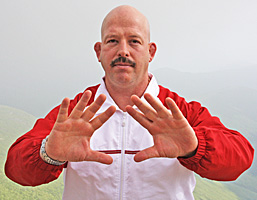Note: Follow me – mattfurey.substack.com for even more emails and articles
To move slowly is holy.
To go faster is disaster.
When you are able to mix the two,
you easily land strikes with fist and shoe.
And become a living, breathing bugaboo.
– el Furecat
It’s a tough one for many people to accept. They attempt to live their lives the way it was depicted in the 1970’s Marathon candy bar commercial: “I am Quick Claude. I do everything fast.”
But could Quick Claude eat a Marathon bar fast?
He tried but he couldn’t do it. Not for a single bite.
So it goes with learning a new skill. We want to learn fast, we want immediate results, but most of the time, this mindset leads to frustration and failure.
There is, however, a faster way to learn anything, and it is the opposite of what you might think. It is called slowing down. It is called taking your time; not rushing.
Most people opt for faster and what they get are tons of mistakes. These mistakes are correctable, but not if you refuse to slow down.
Last night I spoke with a client who has the first draft of a book finished. Now he’s engaged in the slow, laborious task of editing. “Ugh. Editing sucks,” he moaned. “It’s so slow.”
“All great writing is in the editing,” I said. “Slow it down even more.”
“But I am already going slow. You want me to go even slower?”
“Yes. Slower is faster. To go faster you go slower.”
“Hmm?” he questioned.
“Let’s talk physics for a moment, shall we? Maybe it will help you see through the darkness.”
“Okay.”
“Explain the mechanics of an archer to me. What does he have to do before he shoots the arrow?”
“He has to pull the bowstring back,” he replied.
“And then what?”
“He lets the arrow go by releasing the string.”
“Correct. Does he do this fast to learn the skill?”
“No,”
“Correct. What about a golf swing? Is it done quickly?”
“Not if you want to hit the ball hard and straight.”
“And what about the swing itself? Do you move forward first or do you go backward?”
“You go backward.”
“Why?” I asked.
“So you gather enough energy to drive through the ball.”
“Why not go forward first? It’s seems to me that would be faster.”
“It might seem that way but it isn’t,” he replied.
I continued, “What about the baseball pitcher who is throwing a 100-miles per hour fastball?”
“Uh, he goes backwards first, too.”
“Does the pitcher go backwards fast or slow?”
“Slow,” he replied.
“Yet this helps him throw gas?”
“It sure does.”
“How does this relate to the mental game of writing?” I questioned.
“Slow it down.”
“Correct. But what else?”
“I’m not sure,” he remarked.
“You slow it down even more by sitting in a chair and taking a few minutes to visualize yourself editing. Picture the book being finished. And picture where you are in relation to the goal of being finished. This is the mental equivalent of pulling the bowstring back. It’s the same as a good backswing. You create tension first, then you release it. This is how you create speed.”
“Ah, this makes sense,” he said.
“Have you ever cracked a bullwhip?” I wondered.
“No.”
“Well, in order to do it, you have to bring the whip backward slowly. Then you bring it forward at the exact same slow speed. And as the whip comes forward, at the last instant, you tense your hand. You are relaxed until almost the very end of the movement. You have any idea how fast that whip is moving?”
“I don’t know. Maybe 100 miles per hour.”
“100 miles per hour is not going to make a whip crack,” I chuckled. “For it to crack it has to break the sound barrier. This means the cracker at the end of the whip has to traveling at least 767 miles per hour. You cannot make it crack if you rush. You have to relax and let the whip crack itself. If you force the whip with the idea of adding speed, it won’t crack. And when you try to go really fast, you can damage your tendons. It’s the same with writing and editing. Slow is fast and fast is slow.”
Here endeth the lesson.
Matt Furey
mattfurey.substack.com – follow me for even more riveting articles

